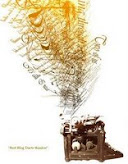Jan van Eyck (sounds like: Yahn vahn Ike) was born in the Netherlands. He was a Renaissance painter but lived earlier than the Italian painters we have already looked at. No one is sure exactly when he was born but it was probably in the late 1380s or early 1390s.
Van Eyck’s older brother, Hubert van Eyck, was also a painter. He probably taught his little brother how to draw and paint. The brothers were both court painters and are believed to have worked together on some paintings.
In 1421, Jan van Eyck became a master painter and went to work for John of Bavaria. At the time he was the Count of Holland. When John of Bavaria died, van Eyck became court painter for the Duke. He was a loved and respected painter even during his lifetime.
The Duke treated van Eyck well and paid him a lot. He feared that van Eyck would seek work elsewhere and the Duke would never find a painter as talented. Most painters of the time worked for anyone who would hire them and had to worry about how they would be able to pay for things. Until van Eyck died, he worked for the Duke. He never had to worry about money.
Van Eyck’s older brother, Hubert van Eyck, was also a painter. He probably taught his little brother how to draw and paint. The brothers were both court painters and are believed to have worked together on some paintings.
In 1421, Jan van Eyck became a master painter and went to work for John of Bavaria. At the time he was the Count of Holland. When John of Bavaria died, van Eyck became court painter for the Duke. He was a loved and respected painter even during his lifetime.
The Duke treated van Eyck well and paid him a lot. He feared that van Eyck would seek work elsewhere and the Duke would never find a painter as talented. Most painters of the time worked for anyone who would hire them and had to worry about how they would be able to pay for things. Until van Eyck died, he worked for the Duke. He never had to worry about money.
 Van Eyck painted many portraits, including the Arnolfini Portrait, shown above. This painting is very famous. You may have seen it before. It is the oldest oil painting on wood panel that was admired and became well known. It is also extremely detailed. Look at the close up of the mirror (shown below). You can see the Arnolfinis reflected in the mirror and two other people standing in the doorway. It is believed that one of the people is van Eyck. Above the mirror it says “Johannes de eyck fuit hic 1434” which means “Johannes van Eyck was here 1434.” What a strange thing to write in the center of a painting! Especially by someone who usually signed only the frames of his paintings.
Van Eyck painted many portraits, including the Arnolfini Portrait, shown above. This painting is very famous. You may have seen it before. It is the oldest oil painting on wood panel that was admired and became well known. It is also extremely detailed. Look at the close up of the mirror (shown below). You can see the Arnolfinis reflected in the mirror and two other people standing in the doorway. It is believed that one of the people is van Eyck. Above the mirror it says “Johannes de eyck fuit hic 1434” which means “Johannes van Eyck was here 1434.” What a strange thing to write in the center of a painting! Especially by someone who usually signed only the frames of his paintings. Van Eyck also painted religious scenes. Shown below is the Annunciation. I love that everyone he painted had skin like porcelain dolls.
Van Eyck also painted religious scenes. Shown below is the Annunciation. I love that everyone he painted had skin like porcelain dolls. Finally, look at Portrait of a Man. This is believed to be a self-portrait but there isn’t really any evidence that this man is van Eyck. One thing to notice, though, is that the head is a bit too large for the body. This is something van Eyck often did. You may have noticed it in the Annunciation, also.
Finally, look at Portrait of a Man. This is believed to be a self-portrait but there isn’t really any evidence that this man is van Eyck. One thing to notice, though, is that the head is a bit too large for the body. This is something van Eyck often did. You may have noticed it in the Annunciation, also. 
Notice how bright all the colors are, too. Van Eyck was a master with oil paints which are much brighter than the tempera paints used by many painters who came before him. He was one of the first to use oil paints to their full potential.
Van Eyck died in 1441. The Duke continued to support van Eyck’s wife after his death and, later, gave his daughter the money she needed to become a nun.Return to main page.








2 comments:
Im am doin' a project on Jan van Eyck. Ha Ha.I know dat u guys r so jealous.
SIKE!!!!!
Actually, that sounds quite interesting. Let me know how it goes, as I am doing a project on Renaissance artists in general :)
Post a Comment